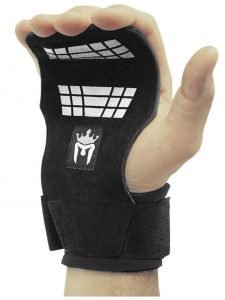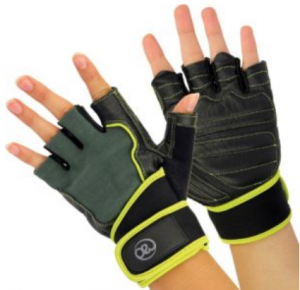There is a lot of great gear and equipment out there for women in powerlifting … let’s go through them!
Singlets – when competing in a powerlifting event, you must wear a singlet or soft suit. If you are a member of a Federation, there may be different requirements for each Federation, so check on that! Some specifications you may find when it comes to Singlets are: The singlet cannot be ‘loose-fitting’, or the singlet must be of one thickness except for the crotch, and the singlet legs must be a minimum 3cm and a maximum 25cm. There are several brands on the market like Titan, Inzer and Lifting Large … plus more.
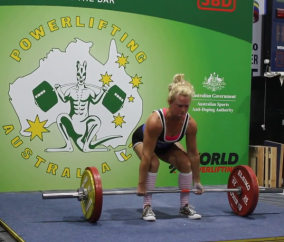
Female Powerlifters wear a T-Shirt under their singlet when competing in any of the 3 disciplines, squat, bench press or deadlift. Always check the Federation Rules, as they may differ from one to another, i.e. some allow no T-Shirt for deadlift.
One concern for women is that the singlet is not see-through, which might occur if the singlet is a lighter color. One solution is to purchase a dark-colored suit, like black or dark blue. Another suggestion is to wear skin-toned underwear.
Underwear – when it comes to underwear, you can wear a ‘standard athletic supporter’ or commercial briefs (not boxers or boy legs) of any mixture of cotton, nylon or polyester can be worn under your lifting suit. Women can also wear a commercial or sports bra … no underwire! You can’t wear swimmers made of ‘rubberized’ or similar stretch material except for the waistband. Any supportive undergarment is not legal in the IPF competition.
Socks – you can wear socks, in fact, you must cover your shins to protect them while you deadlift! The bonus here is … they can be any color and may also have the manufacturer’s logo … but they cannot be so long that they touch your singlet (soft suit), knee sleeves or knee cap supporter.
Lifting Belts – keep that back protected! You can wear a powerlifting belt; it has to be no more than 10cm (4 inches) wide and 13mm (half inch) thick (along the main section of the belt). Most powerlifting belts are 4 inches wide (or 10cm), which suits most women. However, for smaller women with short torsos, you may want to explore purchasing a 3-inch belt (or 7.6cm) Not all powerlifting belt manufacturers make 3-inch belts; however Rogue makes a 3-inch leather belt, and Rogue products are great quality! 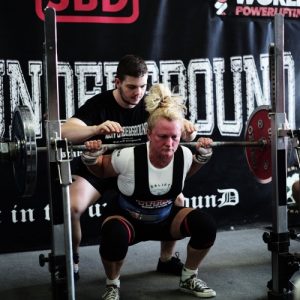
Wearing a belt gives your abs and core more stability however, a belt will be useless if you don’t know how to ‘breathe into it’. The goal of ‘breathing into a belt’ is to brace your abdomen as hard as you can in a 360-degree fashion. You should think about ‘expanding’ into the belt by actively pushing your muscles against it. A common mistake while breathing in the squat is that lifters try to stabilize against their belt after they have already begun descending into the squat. You need to make sure the muscles in your core and lower back are stabilized prior to squatting. i.e. before you bend your hips and knees.
Shoes – there are some awesome squat shoes (that can also be worn for the bench press) and deadlift shoes/boots or slippers around. The difference between 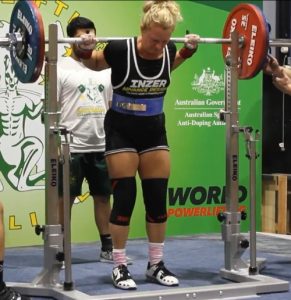 squat shoes and deadlift shoes is that squat shoes generally have a heel whereas deadlift shoes are flat to the ground. The heel in the squat show allows lifters to achieve greater depth in the bottom position without as much mobility required in the hips and ankles. I used to wear squat shoes because my flexibility in my ankles wasn’t great, so I worked on that with stretching and flexion exercises so that I got to the point of being able to wear flat shoes for squatting. The flat soles in the deadlift shoe ensure you are not pulling the barbell any extra distance in the top range of motion. Get yourself a good pair, coz you must wear them!
squat shoes and deadlift shoes is that squat shoes generally have a heel whereas deadlift shoes are flat to the ground. The heel in the squat show allows lifters to achieve greater depth in the bottom position without as much mobility required in the hips and ankles. I used to wear squat shoes because my flexibility in my ankles wasn’t great, so I worked on that with stretching and flexion exercises so that I got to the point of being able to wear flat shoes for squatting. The flat soles in the deadlift shoe ensure you are not pulling the barbell any extra distance in the top range of motion. Get yourself a good pair, coz you must wear them!
Knee Sleeves & Wrist Wraps – the sport of powerlifting is tough on the body, so wear the gear that is permitted to look after your joints! Knee sleeves are usually worn for the Squat. Most powerlifters will train and compete in different knee sleeves. The training knee sleeves are slightly looser, whereas the competition knee sleeves are one size tighter. The tighter the sleeve, the more supported you’ll feel squatting deeper with a heavy weight on your back. Wrist wraps can be worn for the Squat, Bench and Deadlift if you prefer. Wrist wraps come in a variety of sizes from 12-36 inches (30 – 91.5cm). I would suggest buying a pair between 20-24 inches (51 – 61cm), which is a medium length wrap that will give you the support you need without feeling bulky on your wrist.
Again, like most powerlifting equipment, there are specifications around what knee sleeves and wrist wraps you can and cannot wear on the platform so you should check your Federation standards and ensure that the brand and material of the wrap and sleeves are allowed. Some good, safe options are: SBD, Inzer and Titan.
A really great brand of Powerlifting Gear is A7. World Powerlifting has a new range released for 2022, check it out!
Wanting to know more about



